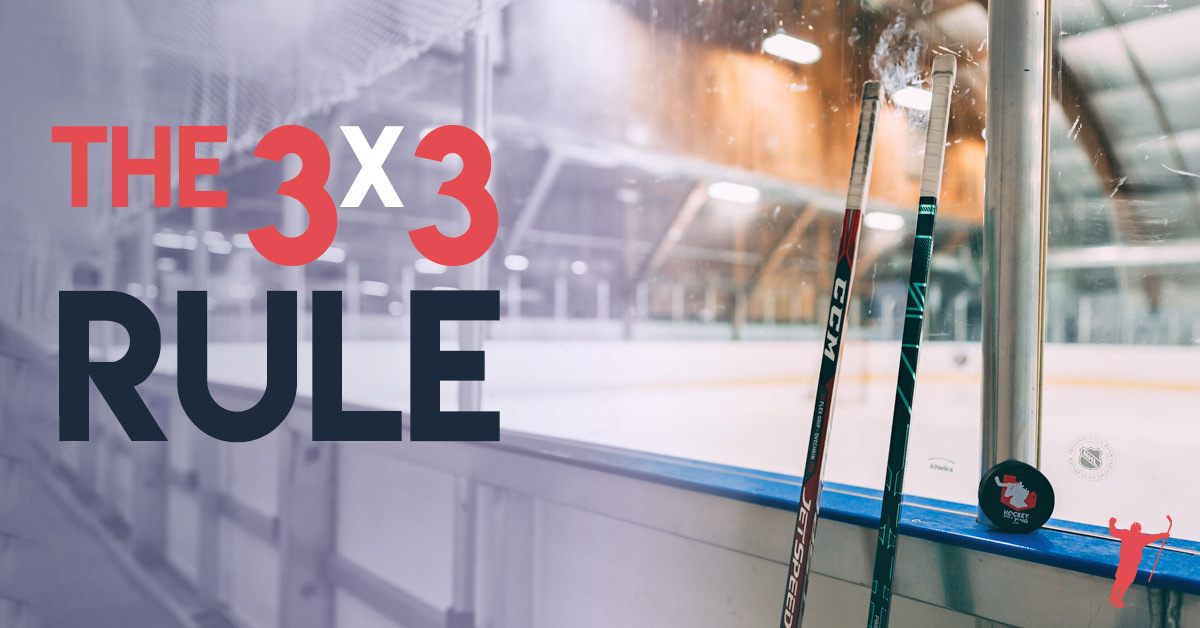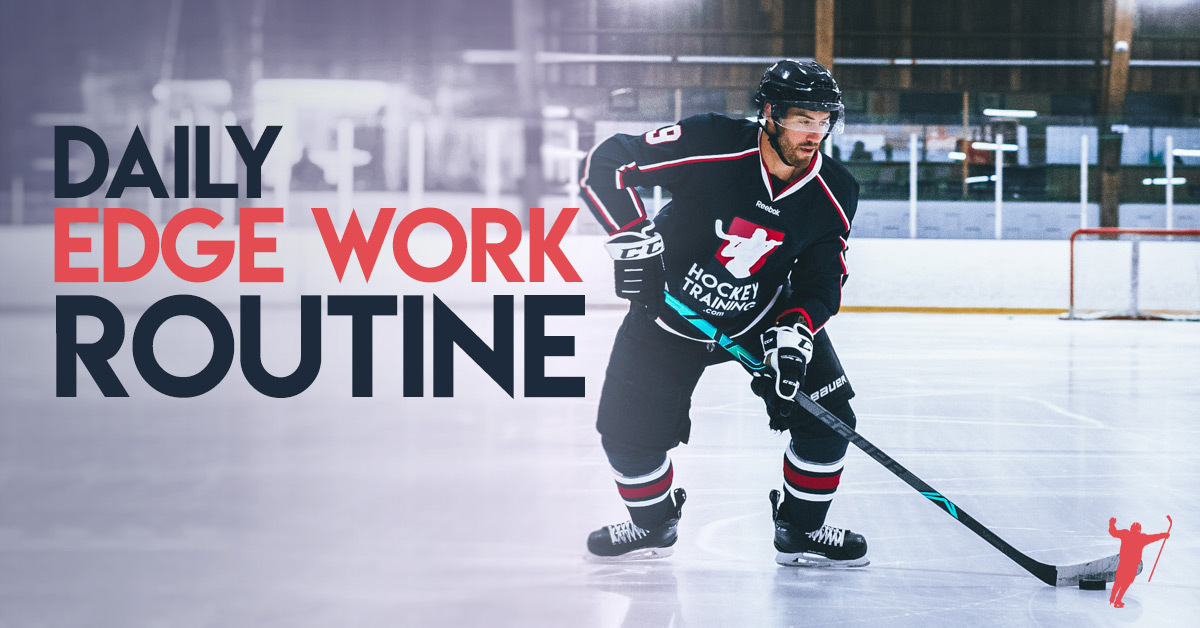In this article, I’m going to give you the action plan you’ve been waiting for to help you become a better hockey player between now and when your official season starts.
Right now, many hockey players are stuck and feel like they are “in limbo” with their training and performance progression, because they have completed their originally scheduled off-season program but have now been told that their in-season is delayed due to COVID-19.
If this sounds like you, then congratulations—you’re in the right spot! Why? Because it’s not a lack of motivation that’s holding you back right now; rather, it’s a lack of clarity on what exactly it is you should be doing.
I am going to run through several different scenarios of options—but before we do that, we have to get very clear on what it truly means to be in the “in-season.”
Off-Season vs. In-Season
Becoming the best hockey player you can be is a year-round commitment.
The off-season is the absolute best and safest time of the year for you to turn up the gears and really push hard with your dryland training for rapid results.
When you don’t need to be on the ice, you’ve got a free pass to crush your training and make the biggest gains you possibly can without having to worry about playing a game that week or performing well in practice.
The off-season is where we dial up your training volume, intensity, and frequency to focus on reducing your body fat, improving your all-around functional outputs on the ice, and building the strength and mental toughness you need to reach your potential.
Take advantage of this time. You will never make gains more quickly than during this time, and it won’t come again for another year.
Now when it comes to the in-season, you have to place a huge emphasis on what’s known as autoregulation. Autoregulation happens when you are objectively honest with yourself and you adjust the intensity at which you perform your in-season workouts.
In most cases, hockey athletes need to steeply reduce their training volume to ensure maximum recovery and optimal performance during games and practices.
This is also where it would be wise to add in additional passive and active recovery methods to ensure your nervous system and muscular system are in peak condition by the time you step out on the ice.
Having reviewed the above, you could boil the top priorities down into a single sentence: The primary goal of the off-season is physical progression, whereas the primary goal of the in-season is physical expression.
Your open schedule during the off-season grants you the licence to train hard to get rapid results in your hockey-specific speed, agility, conditioning, and functional strength training (i.e. all of the qualities we would deem as physical progression).
In contrast, the busyness of your in-season schedule forces you to focus more on active recovery methods to optimize your performance out on the ice (i.e. your ability to maximally express your skill potential).
Should I Be Following an Off-Season or In-Season Training Program?
Reading the above breakdown on your logical training structure during the year, did you notice I never once mentioned which month of the year the in-season and off-season start and stop at?
Why? Because your in-season only ever begins once it has actually begun.
I know that may sound like an obvious statement, but I think much of the confusion surrounding what hockey players should be doing right now is because they have been programmed to believe that the in-season begins in September or October rather than being determined by how many hours they are actually spending on the ice.
Let me simplify the entire concept for you by giving you a good rule to live by:
If You’re Spending 3 Hours Or Less Per Week On The Ice:
If you’re spending three hours or less per week on the ice, I highly recommend getting back on an off-season program so you can increase your training and make even more incredible progress before you hit the ice again (i.e. maximize physical progression).
Example – Your hockey season is delayed but your team still practices 2-3 per week or you do some skill training a few times a week. In this case, get back on an off-season program!
If You’re Spending 3 Hours Or More Per Week On The Ice:
If you’re spending more than three hours per week on the ice, I recommend transferring over to an in-season program that respects the laws of periodization volume control so you can maximize your performance on the ice (i.e. reach your peak physical expression).
Example – You are in your normal hockey season right now (maybe with altered COVID rules) but still playing games or your season is delayed but you are on the ice 4+ hours per week at a high intensity. In this case, get on an in-season program!
If you follow these rules, you will have complete clarity on what you need to do in order to optimize your current situation—no matter what COVID-19 throws at you.
Getting Back on an Off-Season Program?
If you fit the above criteria to get back on an off-season program right now, then I would highly recommend the following:
Ages 15+ → Off-Season Domination
Ages 15+ goalies → Goalie Off-Season Program
Ages 14 and under → Youth Off-Season
Additionally, if you’re up for a challenge and you’re over 15 years old, you could also consider using the 1-Month-To-Speed Program I created to get massive gains in explosive skating speed in as little time as possible.
Switching over to an In-Season Program?
If you fit the above criteria to jump on an in-season program right now, then I would highly recommend the following:
Ages 15+ → In-Season Domination
Ages 15+ goalies → Goalie In-Season Program
Ages 14 and under → Youth In-Season
Not Sure What the Future Holds?
If you aren’t sure when your season is going to start and you have a lot of unpredictability in your hockey life right now, don’t sweat it—the Hockey Skills Accelerator is perfect for you.
The Hockey Skills Accelerator is our flagship VIP program, and it gives members access to every single training program we offer here at Hockey Training (as well as completely free access to our brand new Hockey Training TV app so that you’re armed with a professional schedule no matter where you are or what equipment you have access to).
This means you get complete access to all of the above programs (and many more) so no matter what happens, you will be prepared to immediately pivot and do what’s right for you.
The best part? I do video Q&As with VIP members only so I can personally coach you through even the toughest situations to help you come out on top and become a better hockey player.
Final Thoughts
Although the hockey world may seem a little chaotic right now, your approach to training shouldn’t be.
There are very simple rules we can follow to maximize your performance. The above programming options offer you the perfect “done for you” solutions that you can use to get a leg up on your competition while everyone else is unsure of what to do.









